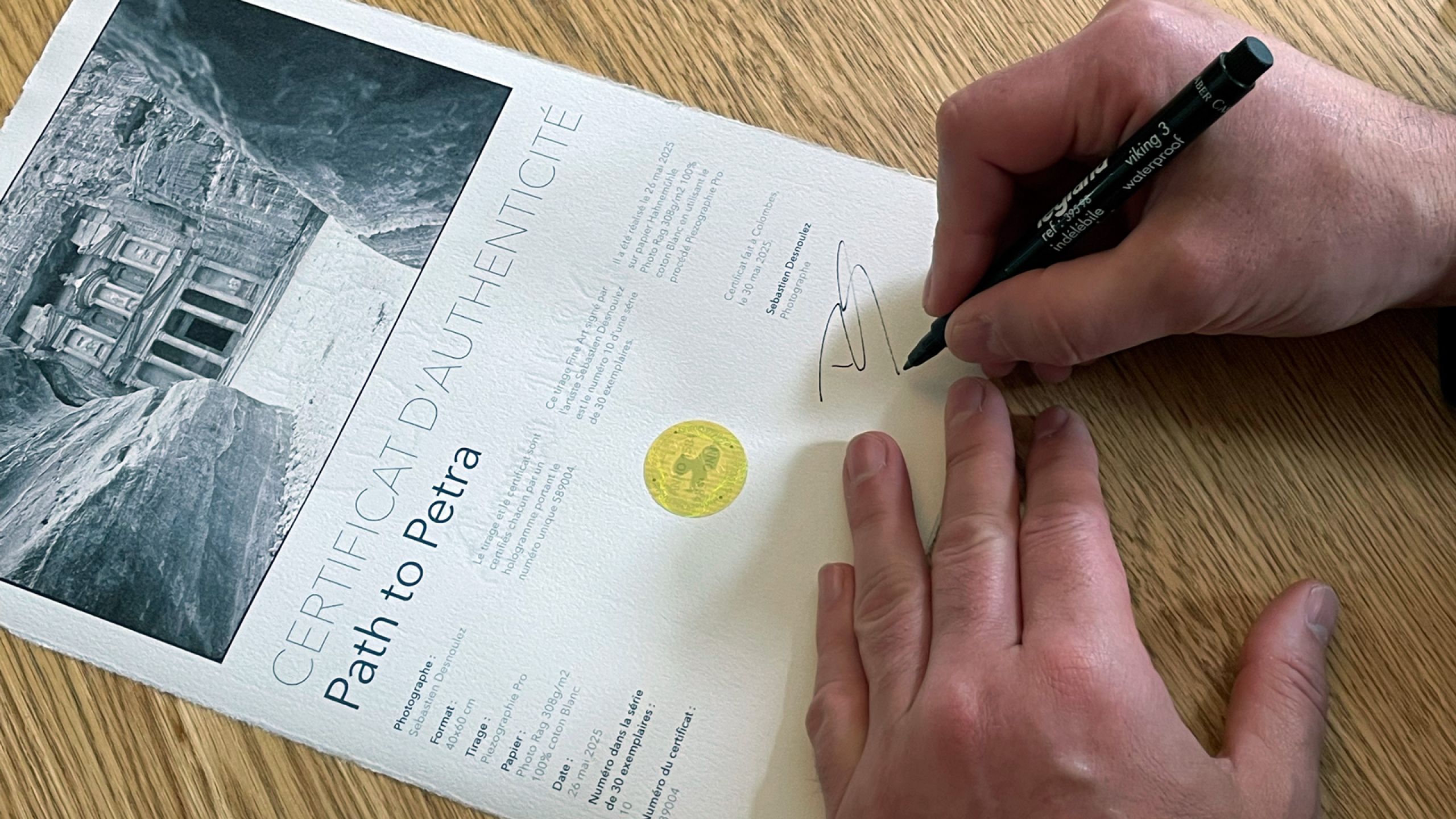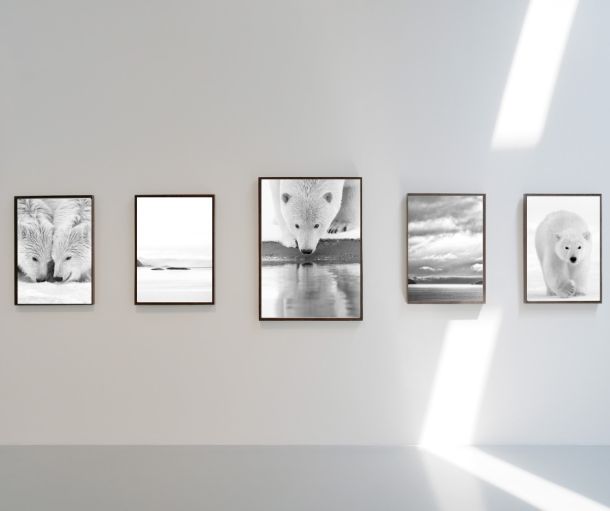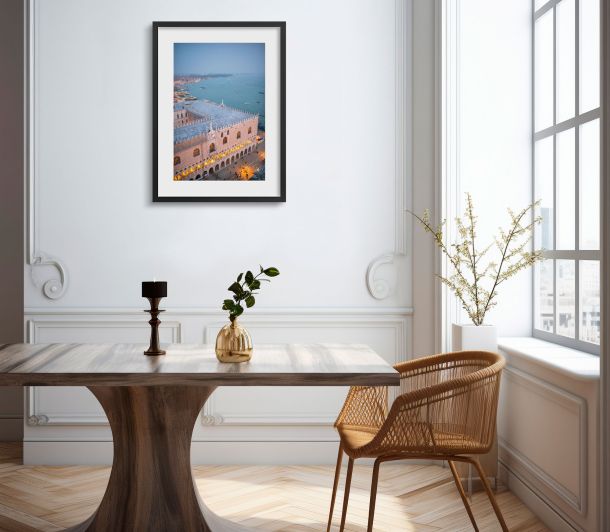The Art of Rarity in Limited Editions of 30

Ever wondered why a limited edition photograph attracts so much attention from both collectors and art enthusiasts? This practice, combining rarity with artistic value, is based on precise criteria that define its appeal. Discover how a limited edition of 30 prints — a symbol of photographic exclusivity — can become both an investment and a centerpiece to elevate your space, thanks to our expertise in art and exceptional fine prints.
Summary
- Definition and Principles of Limited Edition Photography
- The Value of Limited Editions for Collectors and Artists
- Quality Criteria of a Limited Edition Photograph
Definition and Principles of Limited Edition Photography
What Is a Limited Edition in Fine Art Photography?
A limited edition in fine art photography refers to a set of prints of the same image, with a predefined number of copies. Each print is authentic, numbered, and signed by the artist.
The concept of limited prints gained ground in the art world in the early 1970s, marking a turning point in the commercialization of photography. At that time, artists began to control the dissemination of their works by voluntarily limiting the number of available prints.
Rules and Standards of Limited Edition Prints
The fine art photography market relies on international standards to govern limited editions. These rules cover numbering, the artist’s signature, and the issuance of a certificate of authenticity.
| Element | Description | Importance |
|---|---|---|
| Artist’s Name | Clearly identifies the author of the work | Establishes the creator’s identity and legitimacy |
| Title of the Work | Precisely identifies the specific image | Distinguishes the work within the artist’s portfolio |
| Year of Creation | Date the work was produced | Places the work in the context of the artist’s career |
| Dimensions | Specifies the print size | Aids verification and spatial compatibility |
| Medium | Type of paper, ink, and printing process | Ensures visual fidelity, durability, and full artistic value |
| Photo of the Artwork | Image of the photograph on the certificate | Helps visual identification if separated from the certificate |
| Declaration of Authenticity | Signed statement by the artist | Legal proof of authenticity and copyright |
| Print Number | Edition number (e.g., 1/30) | Defines the exclusivity of the print |
| Total Number of Prints | Total quantity in the edition | Establishes rarity based on the legal limit (max 30) |
| Artist’s Signature | Handwritten on the certificate | Validates authenticity and official recognition |
Limited editions come in various formats, media, and printing techniques. The choice of fine art paper, use of pigment inks, or selection of silver gelatin printing determines the print’s quality and longevity.
Why Limit to 30 Copies: Meaning and Impact
The number 30 represents a strategic balance between rarity and accessibility. It allows the artist to preserve the value of the work while making fine art photography accessible to a wider audience.
By limiting the edition to 30, the artist creates a tension between scarcity and acquisition. This quantity offers an exclusive status while allowing enough diffusion to enhance the artist’s reputation — unlike smaller editions.
The Value of Limited Editions for Collectors and Artists
Factors That Determine the Value of a Limited Print
Several factors influence the value of a limited edition photograph. The rarity and reputation of the photographer, technical print quality, and certified authenticity are key criteria.
- Guaranteed authenticity through the artist’s signature and an accompanying certificate
- Rarity determined by the edition size (e.g., 30 copies) and print quality
- Artist’s recognition and reputation in the art photography world
- Printing techniques including paper type (fine art papers) and pigment inks for enhanced durability
Provenance, condition, and exhibition history play a key role in the artwork’s valuation. These elements prove authenticity and increase market credibility.
Benefits for Photography Collectors
Collectors gain personal and cultural enrichment by acquiring rare photographs. These works tell unique stories and become part of a personal artistic journey.
Limited editions are a smart investment in today’s market. Rarity ensures lasting value, while signed and numbered authenticity reassures buyers about provenance.
Benefits for Photographers and Artists
Limited editions offer economic opportunities for photographers. This format elevates their work and opens doors to a structured artistic career.
Rarity is a powerful tool for establishing a distinctive artistic identity. By limiting print numbers, photographers increase perceived value while balancing accessibility and prestige.
Quality Criteria of a Limited Edition Photograph
Premium Printing Techniques and Media
High-end printing techniques used in limited edition photography ensure exceptional quality. Pigment inks and Hahnemühle art papers offer precise rendering and long-term durability.
Media vary depending on the desired visual effect. Matte paper enhances black-and-white nuance, while glossy supports boost vibrant colors. Our prints use 300 gsm papers for optimal strength.
Authenticity and Certification of Fine Art Prints
Authenticity relies on verifiable elements. A certificate of authenticity includes the title, date, technical specs, and the artist’s signature.
Each print is numbered according to art market standards. On une-image-pour-rever.fr, editions limited to 30 prints ensure full traceability, with certificates attesting to provenance and value.
Preservation and Display of Rare Photographs
Proper preservation requires specific conditions. UV-protective glass shields from harmful rays, while noble wood frames guard against humidity and temperature changes.
To elevate a fine art photograph, the frame paired with the print plays a key role. We recommend custom-made oak or brushed aluminum frames with glass filtering over 70% of UV rays.
Size and Format: Impact on Value
Dimensions affect visual impact. Standard sizes fit most spaces, while custom dimensions enhance uniqueness.
Size affects viewer immersion. Large formats dominate a space, while smaller prints favor detailed appreciation. At une-image-pour-rever.fr, each format choice contributes to the artwork’s visual story.
The rarity of a 30-print limited edition gives each photo a unique value — art and investment. On une-image-pour-rever.fr, explore our collection of numbered, signed, and certified fine art prints designed to elevate your space while preserving authenticity. Each collection, limited and exclusive, invites you to own a piece of artistic history, where quality materials and precision reveal the talent of our photographers. Act now — your space deserves this rare touch, where every frame tells a story that will last through time.
FAQ
How Can I Authenticate a Limited Edition Print Myself?
It’s difficult to authenticate a limited edition photograph without expertise, but certain clues can help. Look for a signed certificate of authenticity stating the title, artist, date, edition number, and technical details. Also verify that the photograph is numbered and signed by the artist.
Check the print quality and media used, as limited editions are produced with professional-grade techniques. A numbered hologram on the certificate is an additional sign of authenticity. Don’t hesitate to contact the artist or gallery for confirmation.
How Does Size Affect the Price?
The print format is a key factor in pricing a limited edition photograph. Price and rarity are defined by edition size, printing method, and format. Larger prints capture more detail and make a stronger visual impact.
Size affects perception. Bigger formats allow for richer detail and more immersive display. Choose the size based on intended use, available space, and desired impact.
How Is the Price of a Limited Edition Set?
The price of a limited edition depends on the number of available prints: the more limited the edition, the rarer and pricier it is. The printing method, print format, and artist’s reputation are also key factors. A well-known artist with a unique style can charge higher prices.
The choice of premium photo paper and framing can also raise the value of a work. Galleries play a role in giving artists legitimacy and greater visibility, thereby influencing prices.
Why Should Emerging Artists Choose Limited Editions?
For emerging artists, limited editions offer many benefits. They create a sense of exclusivity and rarity around the work, attracting collectors. This rarity can increase the perceived value over time, turning the purchase into a potential investment.
Limited editions foster a closer relationship between artist and collector and allow the artist to retain control over reproduction. They also offer marketing and promotional opportunities, increasing visibility in exhibitions and online.



